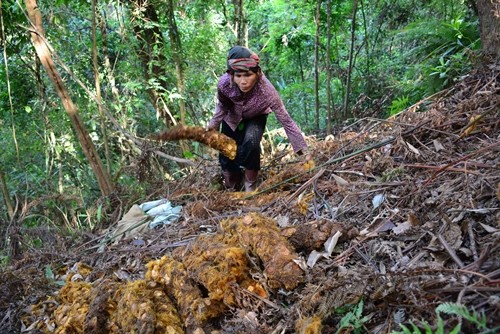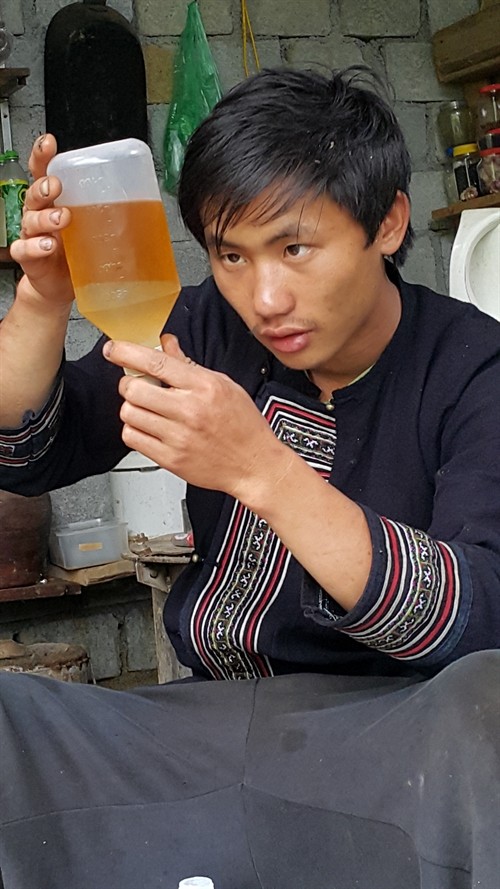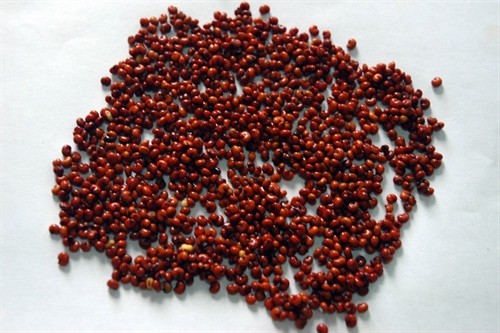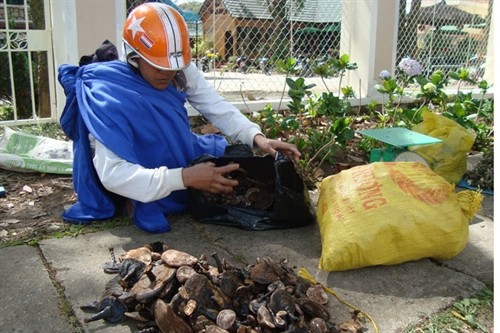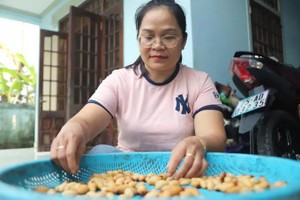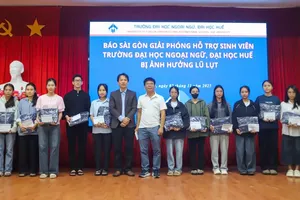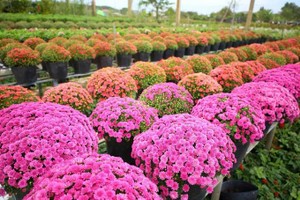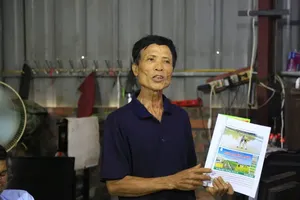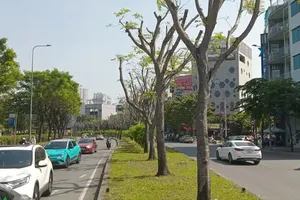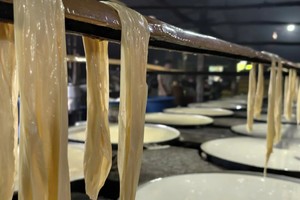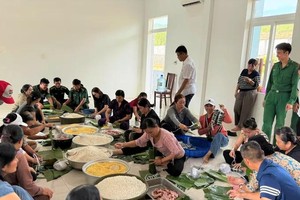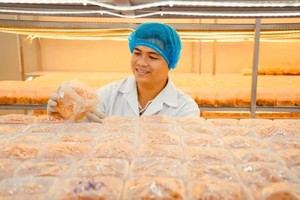Farmers nationwide have improved their lives considerably by cultivating medicinal herbs, but over exploitation threatens their extinction. Despite the country’s tremendous potential as a grower and producer of herbal medicine, it has gone from being an exporter to an importer of medicinal materials. Viết Tôn and Bạch Liên reports.
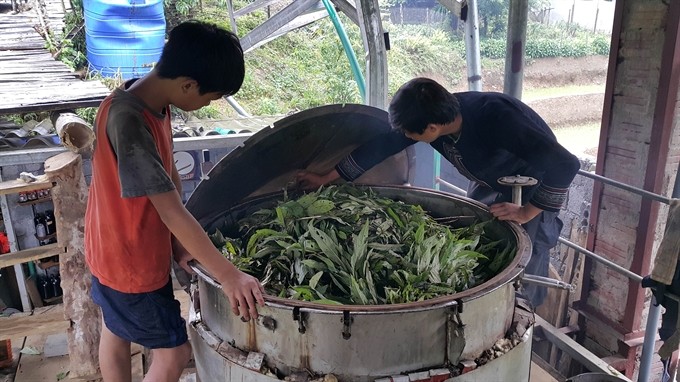
Standing in the middle of his two-hectare artichoke garden in Tả Phìn Commune of Sa Pa District, Lào Cai Province, Thào A Cáng cannot conceal his pride.
From a poor farmer who hardly earned a living, after the latest artichoke harvest he would even be able to buy a motorcycle.
Cáng, a member of the Dao ethnic group, is a happy man. Not only has his life imporved significantly, his artichokes also help others.
“Growing artichoke is easier than growing rice, moreover the benefit is three-fold or four-fold,” he says.
Like him, many local inhabitants of Sa Pa have seen their lives improve since they returned to growing medicinal plants after a hiatus of decades.
“Sa Pa used to be famous for growing medicinal plants," says Lê Tân Phong, deputy chairman of the Sa Pa District’s People’s Committee.
"In the 1980s, we used to provide the seeds to some areas to grow medicinal plants and sell them to East Europe. However in the early 90s, due to changes of the political system in this East European market, the export medicinal plants in Sa Pa declined,” he said.
Now, with the crops restored, local farmers can earn up to VNĐ5 million (US$224) to VNĐ7 million ($313) per month.
In the central province of Quảng Nam, farmers can also escape poverty thanks to the cultivation of medicinal herbs, sometimes in the foliage of the forests.
Since the beginning of this year, local farmers have been given 200,000 medicinal herb seeds to plant in an area of six hectares under forest foliage.
Arất Blui, deputy chairman of the People’s Committee of the province’s Tây Giang District, said cultivation of those plants was an efficient way for local inhabitants to ensure a stable livelihood.
The province is home to more than 700,000ha of forest land which is suitable for the cultivation of a variety of medicinal plants including Ngọc Linh ginseng, cinnamon, giảo cổ lam, and sa nhân (ammum), in addition to hoàng đắng, đinh lăng, which have great economic potential.
The herbs are believed to have curative value for a variety of ailments and yield substances that can be extracted to make dietary supplements and alternative medicines.
Việt Nam has tremendous potential to develop medicinal substances, including cinnamon and star anise.
Medicinal plants flourish across the country, primarily in the northern mountainous region, in the western part of the central provinces of Nghệ An and Thanh Hóa, and in the Central Highland provinces of Kon Tum and Lâm Đồng. Star anise, which is grown in the northern provinces of Lạng Sơn, Quảng Ninh and Bắc Kạn, has fetched handsome profits for local residents.
Risk of over-exploitation
However, the over-exploitation of those medicinal herbs without preservation and development plans has increased the risk of extinction of some precious plants.
The People’s Committee of Kon Tum said that in recent years, many Vietnamese traders often bought cu li bulbs from the province’s Đăk Glei District. The plant is in great demand for treating back pain and aches and pains of bones and tendons.
The plant’s price ranges from VNĐ2,000 to 2,500 per kilogram of fresh bulbs. After preliminary treatment and drying, they are sold at a price between VNĐ12,000 and 15,000 per kilogram, mostly to the Chinese market.
Statistics show that the Central Highlands have 1,000 varieties of medicinal plants as its land and climate are very suitable for their growth.
Nguyễn Văn Dư from the Institute of Ecology and Biological Resources said the Central Highlands began to preserve precious medicinal plants a long time ago.
Already in 1996, several medicinal plants in the region were threatened with extinction from over-exploitation. Moreover, every year thousands of hectares of forest were destroyed to make way for plantations of coffee, pepper, rubber, and cocoa, shrinking the cultivation areas of the medicinal plants.
Population growth and the attendant demand for housing, along with rapid urbanisation, have resulted in the loss of different varieties of medicinal plants.
From exporter to importer
Sadly, in recent years Viet Nam has gone from being an exporter to an importer of medicinal substances.
The situation has become more and more alarming. Some six years ago, Deputy Prime Minister Nguyễn Thiện Nhân asked the Ministry of Health to make a plan for developing and preserving precious herbs and other susbtances used for medicinal purposes.
The uncontrolled exploitation of medicinal plants has made it difficult to source them in order to produce medicines locally at low prices.
The Ministry of Health estimates that the country currently has more than 4,000 plant species used to produce traditional medicines.
It is estimated that about 5,000 tonnes of medicinal crops are planted and harvested annually.
Domestic demand is very high.
At a recent workshop on Sustainable Development of Medicinal Materials in Việt Nam, experts said the country’s pharmaceutical industry had consumed about 60,000 tonnes of traditional or herbal medicinal materials per year, of which around 80 per cent were imported from the Chinese mainland, Taiwan and Singapore.
Safety standards
The director of the ministry’s Traditional Medicines Department, Phạm Vũ Khánh, said that every week some 300 to 400 tonnes of medicinal substances were imported, mostly from China.
According to Khánh, most of the imported substances from China were agricultural products not geared for the production of traditional medicine.
“That would impact much of the safety standards of medicinal materials and the development of the traditional medicine industry in Việt Nam,” he said.
The director pointed to shortcomings in the management of imported medicinal materials, especially at border checkpoints: authorities can only check quantity but not the quality.
Experts at the event attributed the problem to a lack of capital investment for developing herbal materials and formulating relevant regulations. The management of traditional medicine production and trading is currently based on Western medicine regulations. The country’s traditional medicine testing system needs to improve its quality, as well, they said.
They urged Việt Nam to prioritise its policies to support local traditional medicine producers and minimise the import of materials in order to promote local production and producers.
To preserve and develop those medicinal plants, experts also urged better management of the Central Highland forests and less forest destruction, in general, for the cultivation of industrial crops.
They also called for teaching local inhabitants about the importance of those plants and how they can be used to their own benefit.
